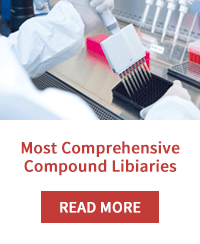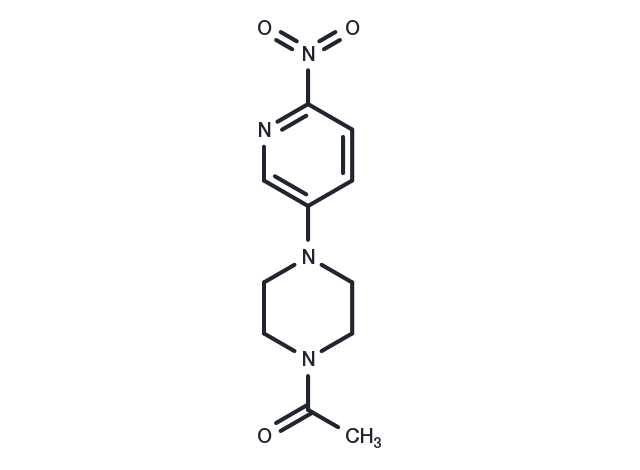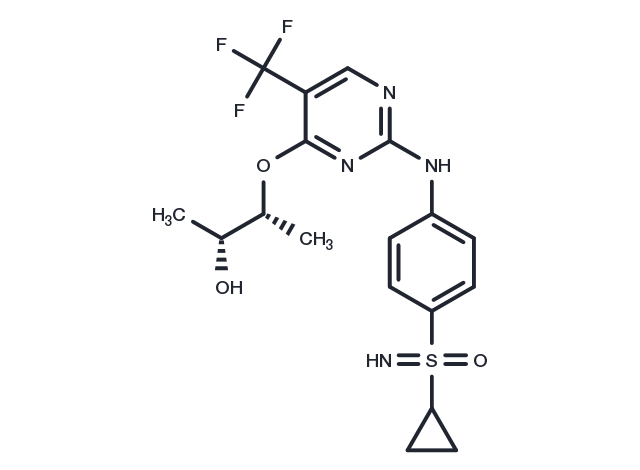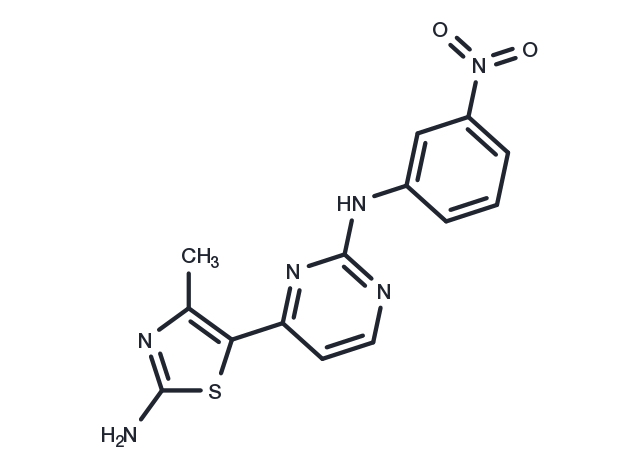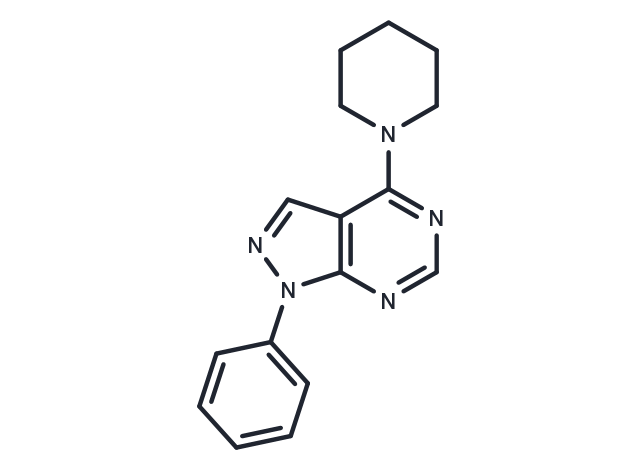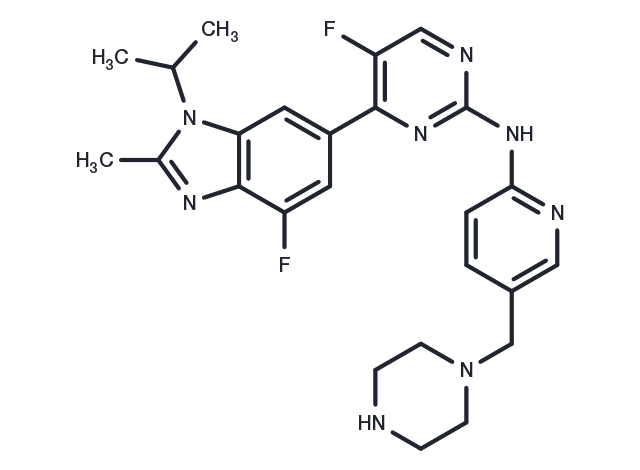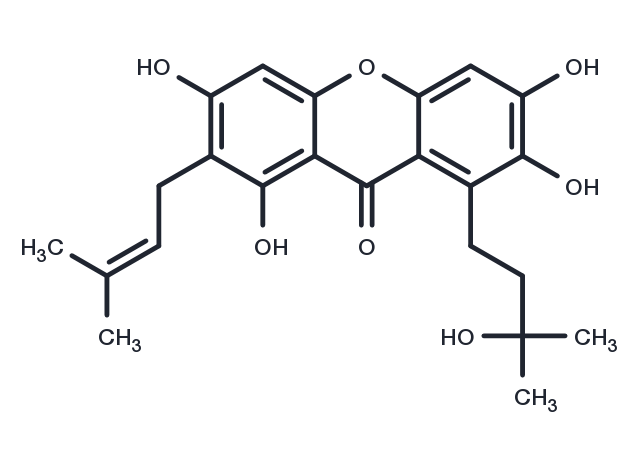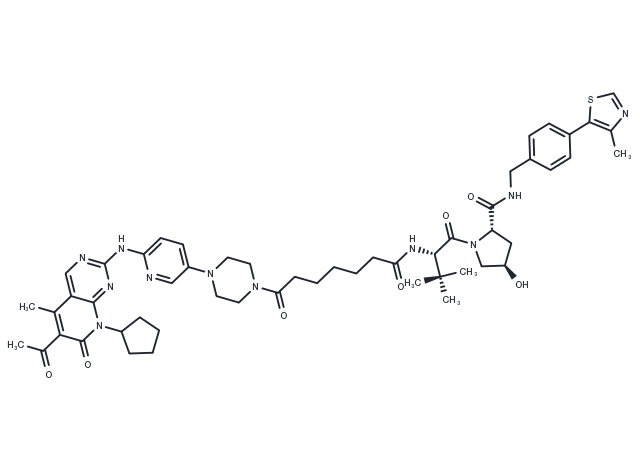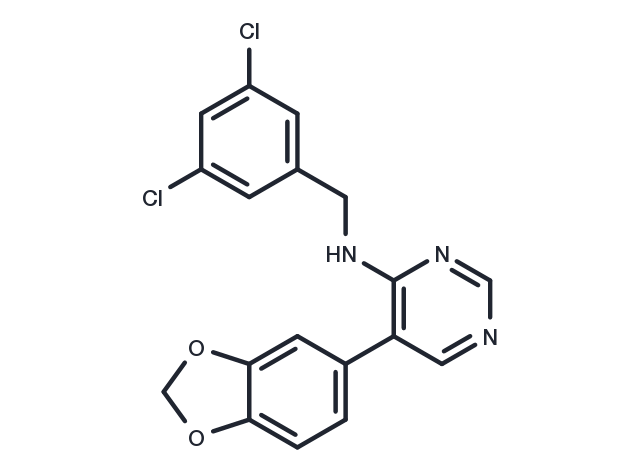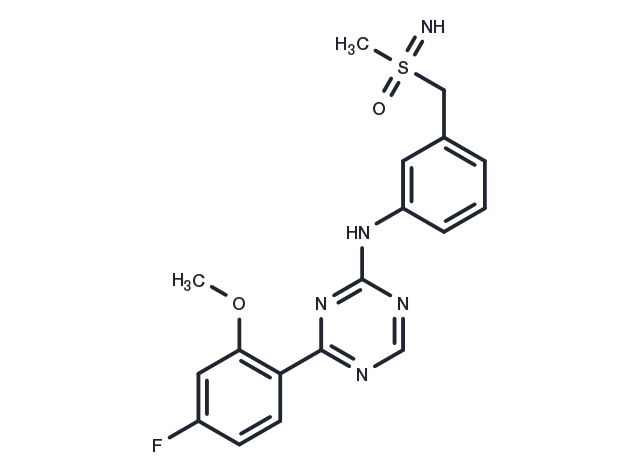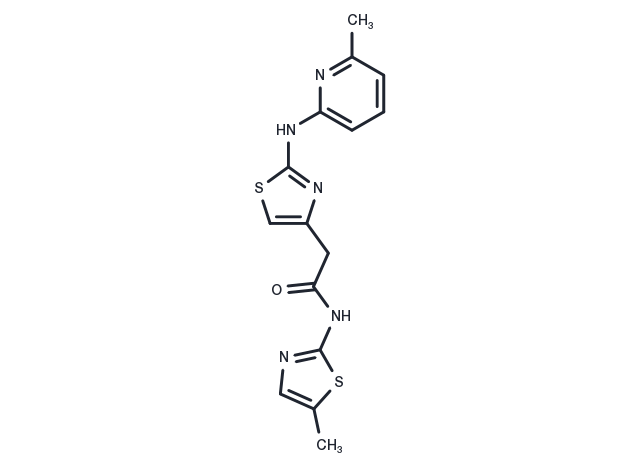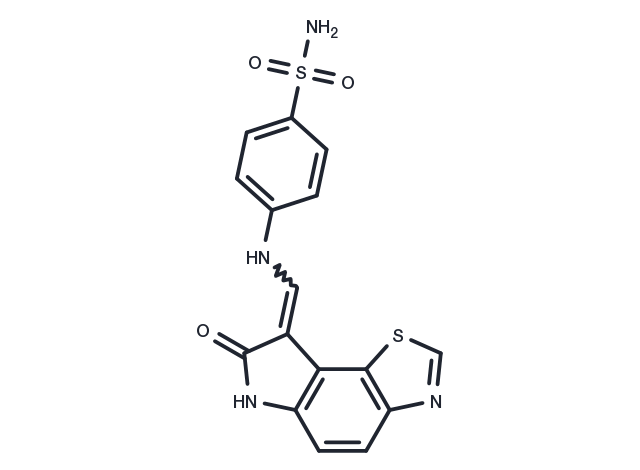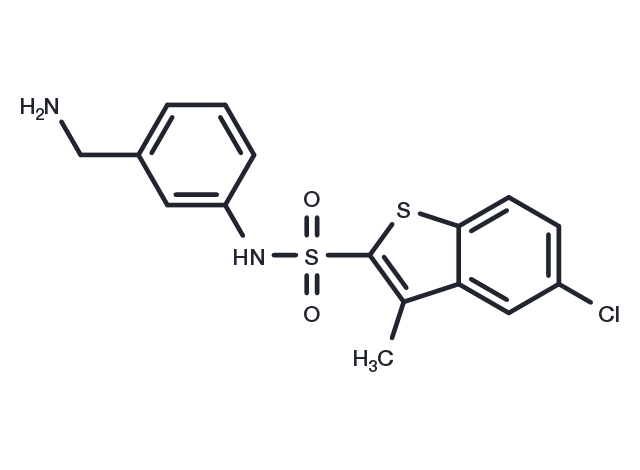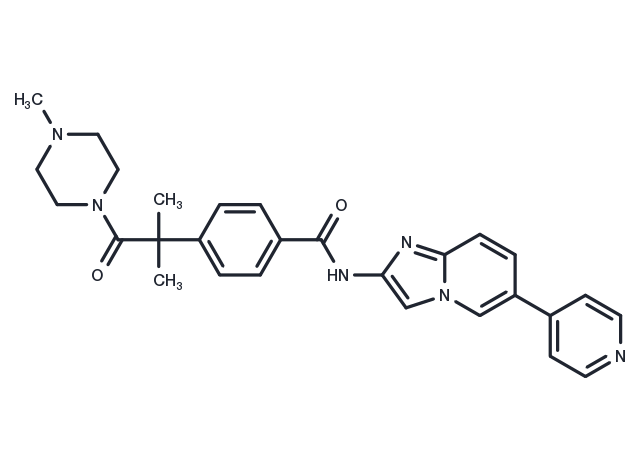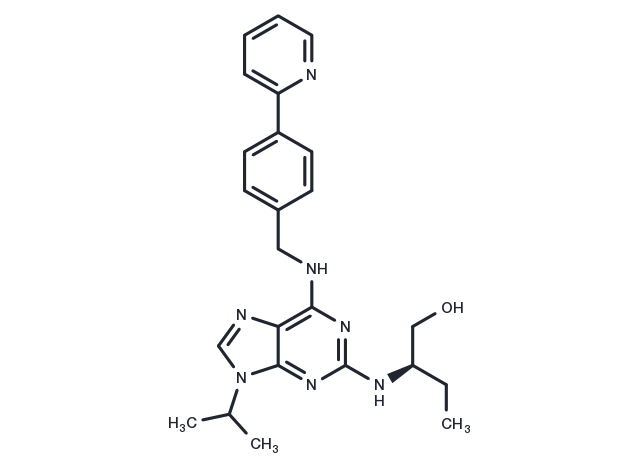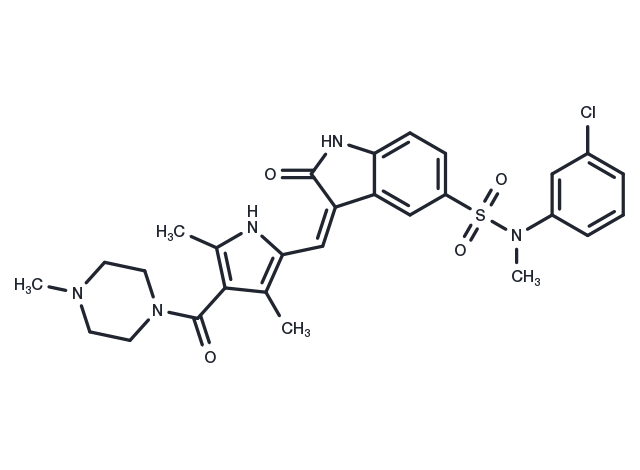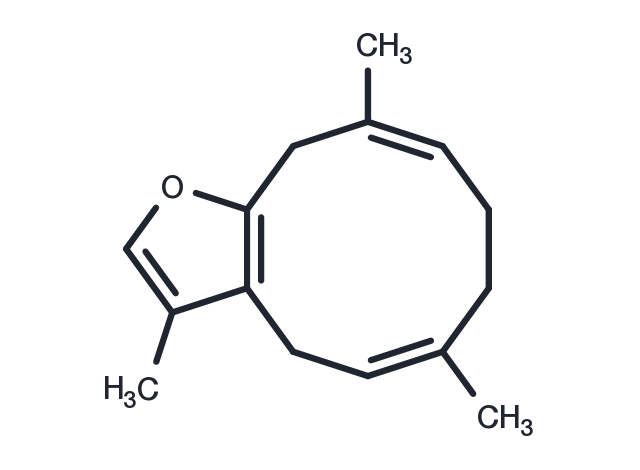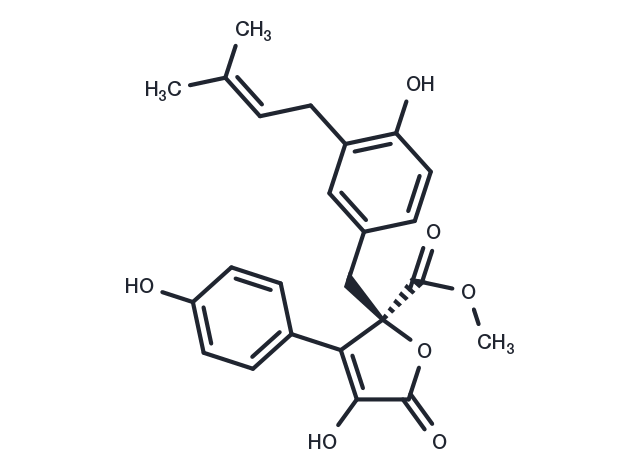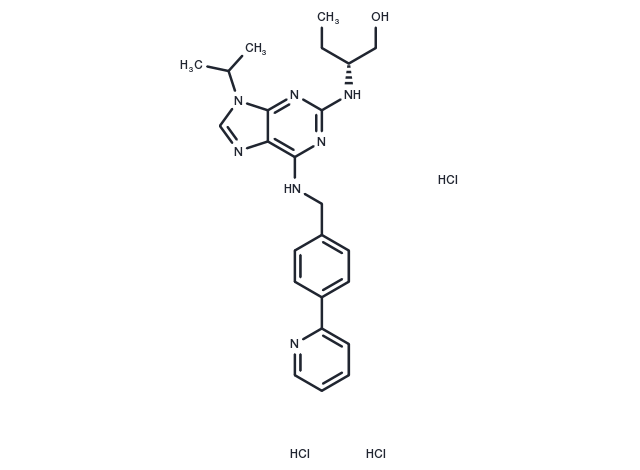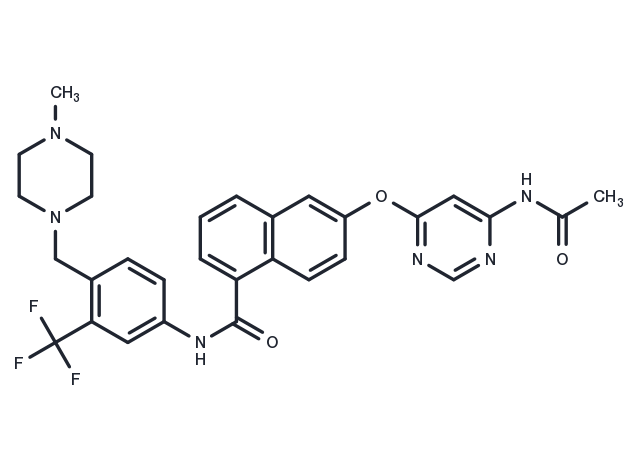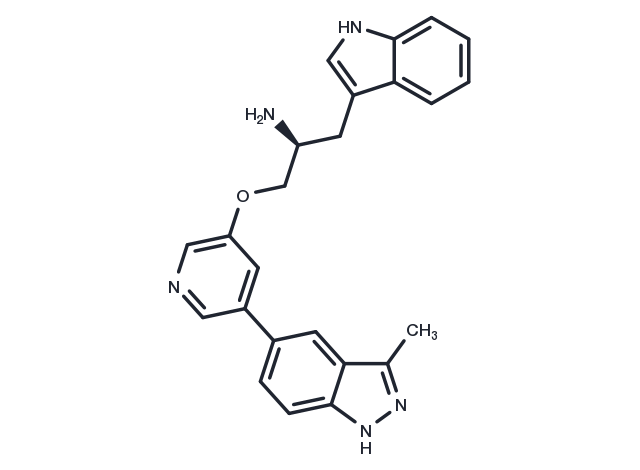| T9971 |
WAY-647802
|
852225-20-8
|
98%
|
|
|
WAY-647802 is a CDK inhibitor.
|
| T16784 |
Roniciclib
|
1223498-69-8
|
98%
|
|
|
Roniciclib (BAY 1000394) is a potent pan-CDK inhibitor and a novel oral cytotoxic agent. Roniciclib inhibits the activity of cell-cycle CDKs CDK1, CDK2, CDK3, CD...
|
| T9615 |
CK7
|
507487-89-0
|
98%
|
|
|
CK7, a Cdk2/9 inhibitor, is instrumental in the synthesis of Nek1 inhibitors BSc5231 and BSc5367.
|
| T23840 |
BUR1
|
23000-46-6
|
98%
|
|
|
BUR1 is a selective BMP upregulator that acts by increasing the expression of Inhibitor of DNA binding 1 and inducing BMP2 and PTGS2 expression.
|
| T10220 |
Abemaciclib metabolite M2
|
1231930-57-6
|
98%
|
|
|
Abemaciclib Metabolites M2 is a metabolite of abemaciclib, acts as a potent CDK4 and CDK6 inhibitor (IC50s: 1-3 nM) with anti-cancer activity.
|
| TN1673 |
Garcinone C
|
76996-27-5
|
98%
|
|
|
Garcinone C is a xanthone derivative extracted from Garcinia oblongifolia Champ with anti-inflammatory, astringency, and granulation-promoting activities. Garcin...
|
| T13361 |
XY028-133
|
2229974-73-4
|
98%
|
|
|
XY028-133 is a PROTAC-based CDK4/6 degrader for the study of tumors.
|
| T36707 |
ML 315
|
1440251-53-5
|
98%
|
|
|
ML 315 is a selective Clk and DYRK inhibitor with potential anticancer activity for the study of neurological disorders.
|
| T10464L |
Atuveciclib Racemate
|
1414943-88-6
|
98%
|
|
|
Atuveciclib Racemate (BAY-1143572 Racemate) is the racemate mixture of Atuveciclib, which is a potent and highly selective, oral P-TEFb/CDK9 inhibitor which supr...
|
| T9849 |
HQ461
|
1226443-41-9
|
98%
|
|
|
HQ461 is a molecular glue that promotes CDK12-DDB1 interaction to trigger cyclin K degradation, resulting in decreased CDK12 substrate phosphorylation, downregul...
|
| T75163 |
GW297361
|
388627-21-2
|
98%
|
|
|
GW297361 is a potent inhibitor of the cell cycle protein-dependent kinase Cdk1 and also inhibits the Pho85 signaling pathway.The IC50s of GW297361 on yeast Cdk1 ...
|
| T9734 |
InhA-IN-2
|
2428737-43-1
|
98%
|
|
|
InhA-IN-2 directly inhibits InhA and does not require activation by the catalase peroxidase KatG.
|
| T14980 |
CLK-IN-T3
|
2109805-56-1
|
98%
|
|
|
CLK-IN-T3 is an inhibitor of CLK1, CLK2, and CLK3 with IC50s of 0.67, 15, and 110 nM. CLK-IN-T3 exhibits anti-cancer activity.
|
| T12617L |
(R)-CR8
|
294646-77-8
|
98%
|
|
|
(R)-CR8 ((R)-Isomer) is a potent and selective CDK inhibitor.
|
| T6154 |
SU11274
|
658084-23-2
|
98%
|
|
|
SU11274 (Met Kinase Inhibitor)(IC50=10 nM) is a specific Met inhibitor. It shows no significant effects on PGDFRβ, EGFR or Tie2.
|
| TN1651 |
Furanodiene
|
19912-61-9
|
98%
|
|
|
Furanodiene has anti-inflammatory and antioxidant activities, it is active against gram-positive bacteria and Candida albicans.
|
| T25192 |
Butyrolactone I
|
87414-49-1
|
98%
|
|
|
Butyrolactone I (Olomoucin) is an ATP-competitive inhibitor of CDK and cdc2 kinase family. Butyrolactone I shows antitumor effects in non-small cell lung, small ...
|
| T12617 |
(R)-CR8 trihydrochloride
|
1786438-30-9
|
98%
|
|
|
(R)-CR8 trihydrochloride (CR8, (R)-Isomer trihydrochloride) is a CDK1/2/5/7/9 inhibitor that acts as a molecular glue degrader with neuroprotective activity and ...
|
| T4618 |
BGG463
|
890129-26-7
|
|
|
|
BGG463 (K 0859) can inhibit c-ABL-T334I, BCR-ABL and BCR-ABL-T315I variants with a 50% inhibitory concentration (IC50) of 0.25 μM, 0.09 μM and 0.590 μM, respecti...
|
| T14072 |
A-443654
|
552325-16-3
|
|
|
|
A-443654 is a pan-Akt inhibitor. A-443654 has equal potency against Akt1, Akt2, or Akt3 within cells (Ki=160 pM).
|

